Britain’s five best slow train journeys
7 min read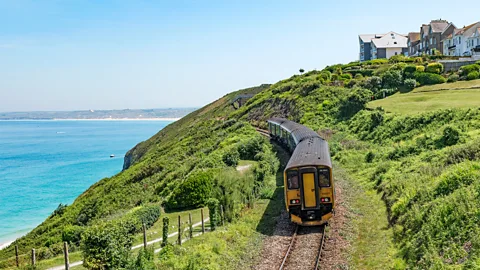 Getty Images
Getty ImagesAs England celebrates the 200th anniversary of rail travel, author and train expert Tom Chesshyre reveals his favourite rides across the UK.
Two hundred years ago in a small market town in north-east England, something happened that had never been seen before: ticket-holding travellers boarded carriages and eagerly awaited as a steam locomotive hauling passenger cars began to slowly rattle along wrought-iron tracks. The locomotive-powered series of cars and carriages was called a train, and this first 26-mile journey in 1825 from Darlington to Stockton birthed the modern railway and forever changed the world.
The bicentennial of this momentous event was the impetus for author, traveller and train enthusiast Tom Chesshyre’s most recent book, Slow Trains Around Britain. For more than 20 years, Chesshyre has been riding the rails across the UK and around the world, totalling more than 40,000 miles in all.
Chesshyre recently sat down with the BBC to talk about his new book, what still makes rail travel so alluring and his favourite “slow-train” rides (regional train trips) in Britain.
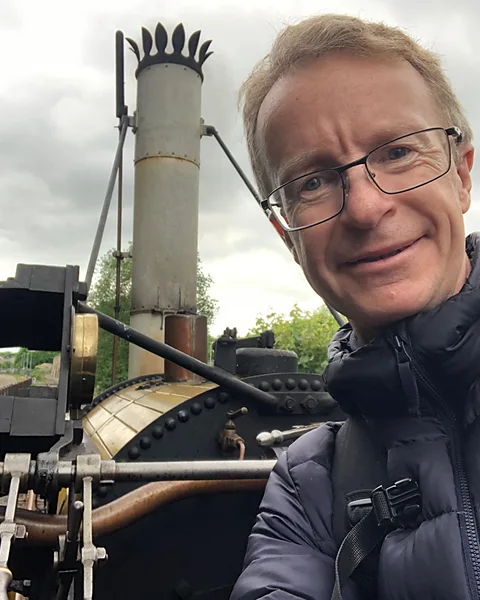 Tom Chesshyre
Tom ChesshyreWhat inspired you to write Slow Trains Around Britain?
I’ve been interested in railways for some time. It’s a slower way [to travel]. You see places off the beaten track out of the train window. But it was the anniversary that really inspired it.
Considering that trains are a more eco-friendly way to travel than flying and people are increasingly concerned about their carbon footprints, do you think we’re on the verge of a resurgence in train travel?
I think we’ve got a way to go. As long as the flight prices are so cheap, it’s very tempting if you’re in Britain to fly to Barcelona. You could fly there maybe for £60 return. But to get a train, it might cost £150 each way. The prices are so against it. However, there’s a pass in Europe called the Interrail Pass, which is offered by a company called Rail Europe. In the past, it used to be mainly youthful backpackers, but I think now people are aware that if they’ve got two or three weeks off, they can book one of these rail passes and have an adventure around Europe by taking trains. Buying these passes makes it more affordable.
The other thing is the high-speed train networks in Europe have [gotten] much better. Spain now has the best high-speed network in Europe, so now most people in Spain would not consider flying from the north to the south.
Why do you think travellers remain fascinated by trains?
There’s a kind of nostalgia for the golden age of trains, when there was a kind of Agatha Christie feel: plush velvet seats (they were normally in the first class) waiters with bow ties and a mystique. This was very much where princes, royalty, celebrities, writers, actors and the aristocracy of Europe used to ride around on trains, say, from the 1890s to around the Second World War. This was the glamorous way of getting about, and I think in the back of people’s minds, there’s a belief that there’s a kind of romance connected to train travel.
You’ve [still] got these beautiful old stations, too. People may go to a station such as St Pancras in London with all this beautiful Gothic style, and they think: ‘This is a beautiful setting.’
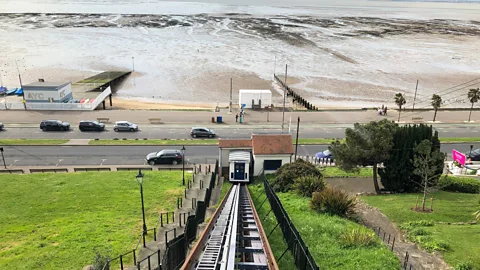 Tom Chesshyre
Tom ChesshyreDo you have a favourite international train trip that you’ve taken?
Just for the sheer adventure of it … I enjoyed the Trans-Siberian Railway. I went from Moscow to Beijing, which was many thousands of miles; it took nine days. I liked it because you could see the scenery. We went into Siberia; we went above Mongolia. And when you’re on a train for that long as a writer, I met all sorts of characters.
I was confronted by a drunken Russian who was unhappy with me for some reason I didn’t understand. I got to know the people who worked at the dining carriage and how the waitress was having an affair with the steward who ran the carriage. The actual train [becomes] its own ecosystem. I got to see the beautiful Ural Mountains, these industrial cities with their smokestacks, the great big pine forests and the expanse of the tundra. [It was] a sleeper car for eight nights, nine days, so this was quite an adventure.
What do you hope readers take away from your book?
Well, [train travel is] a way of getting about that opens up parts of the country you might not normally see – not just in Britain, but anywhere. And if you use a train line as a kind of means of getting about, you can stop off, and you don’t have to worry about traffic jams. You don’t have to worry. You’re not having a big carbon footprint.
You’re not stressed out in a car, you can read a book, you can visit places that you wouldn’t really see [otherwise] and I think we rush around so much in our lives that it’s time that we should think about slowing down. There’s no need to hurry, and that’s what trains allow you to do. So just take it slow.
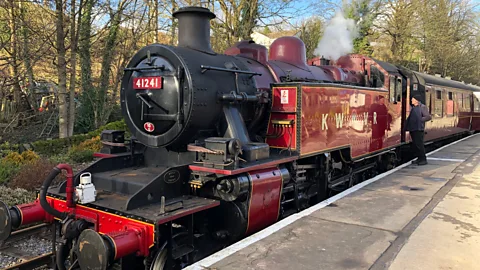 Tom Chesshyre
Tom ChesshyreThese are Chesshyre’s favourite slow train rides in Britain.
Inverness is in the middle of Scotland, and then I went all the way up to the most northerly station in the whole of the UK, which is called Thurso. You go through this kind of moorland, almost like a kind of desolate landscape. It’s really awe-inspiring and so quiet. You feel like you’re taking a train and disappearing from modern life, leaving it behind. It’s not an expensive ticket either; it’s a regular train. You end up in this little town overlooking the Atlantic Ocean up there, and it’s just a feeling of escape. (Interested? Check out this recent BBC Travel story: Scotland’s most remote railway adventure.)
The most picturesque of all was probably just the short journey from St Erth in Cornwall to St Ives, which is a kind of [an] old fishing village that all these artists went to live in. You go along this clifftop with a beach down below and all the waves crashing on the shore. You must sit on the right going in and on the left going out if you want to get the perfect view.
Going through the middle of Wales, it’s called the Transport for Wales train line. You’d be [starting] in a place called Craven Arms and [going] as far as a place called Llanelli. This journey took about three hours, but it was on a Saturday evening, and people had brought their beer or wine and their snacks. I kind of sat, and I watched as people began singing some Welsh songs. [It became] a singalong!
It wasn’t like people were getting drunk; it was just kind of jolly. It was only one carriage for this train, so there was a small little party going on as the darkness fell, with the green hills around us on a very remote line. It was a very happy experience.
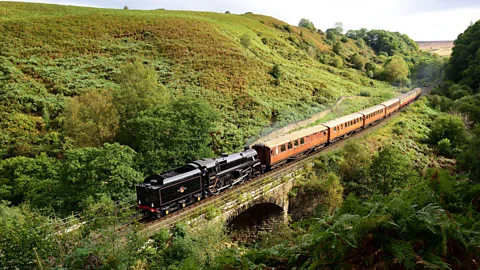 Alamy
AlamyThere are lots of these heritage lines; they’re kind of like the old steam trains. You have in Britain 170 [of them], which is unbelievable, heritage lines covering around 600 miles. These are special little lines that might only just be open at the weekend.
One of them went from a place called Hythe in Kent to Dungeness, which is where there’s a former nuclear power station. It’s tiny, and they have what are called ‘narrow gauges’. So it’s not the big, wide train, like a normal train. It’s narrow … a 1-ft or 2-ft-wide track. It was created by an eccentric aristocrat who had a lot of money and decided to build a little toy train just for himself. It was like a little baby train. So, that was maybe a historic train line that I wouldn’t have discovered if not for the book.
There was one place called the North Yorkshire Moors Railway that is up in the north-east, near the Stockton and Darlington, where I began the whole journey.
In the 1960s, when motorways came along [in the UK], it began to basically make railways not so important. There was a massive cutback in railways in Britain. There were as many as 23,000 miles of train tracks, and now there are only 10,000 miles of train routes. But on one of these routes on the North Yorkshire Moors Railway, rail enthusiasts reopened it in the 1970s.
So, you can go along this little train track with all these old steam trains through beautiful moorlands, very remote. Lovely bracken and gorse on the hillside, and you see the steam trailing past the carriage windows. I was allowed to go in where they put the coal in, you know, and actually see the furnace at the front.
At least 30,000 people volunteer to help these [old steam trains.] They’re not for profit, most of these things. It shows that 200 years on, there is still a lot of respect and pride in Britain for the fact that trains were invented here. That was quite touching to see.
This interview has been edited for length and clarity.
—



